
Betty Compson was an American actress and film producer who got her start during Hollywood's silent era. She is best known for her performances in The Docks of New York and The Barker, the latter of which earned her an Academy Award nomination for Best Actress.
This is an overview of 1923 in film, including significant events, a list of films released and notable births and deaths.

A wagon train is a group of wagons traveling together. Before the extensive use of military vehicles, baggage trains followed an army with supplies and ammunition.

Kevin Brownlow is a British film historian, television documentary-maker, filmmaker, author, and film editor. He is best known for his work documenting the history of the silent era, having become interested in silent film at the age of eleven. This interest grew into a career spent documenting and restoring film. Brownlow has rescued many silent films and their history. His initiative in interviewing many largely forgotten, elderly film pioneers in the 1960s and 1970s preserved a legacy of early mass-entertainment cinema. He received an Academy Honorary Award at the 2nd Annual Governors Awards given by the Academy of Motion Picture Arts and Sciences on 13 November 2010. This was the first occasion on which an Academy Honorary Award was given to a film preservationist.

Charles Stanton Ogle was an American stage and silent-film actor. He was the first actor to portray Frankenstein's monster in a motion picture in 1910 and played Long John Silver in Treasure Island in 1920.

Lois Wilson was an American actress who worked during the silent film era. She also directed two short films and was a scenario writer.

James Cruze was a silent film actor and film director.
Phonofilm is an optical sound-on-film system developed by inventors Lee de Forest and Theodore Case in the early 1920s.
A Musical Monologue is a 1923 American short film produced by Lee De Forest in his Phonofilm sound-on-film process. The film features Phil Baker, well-known vaudevillian, singing and playing the accordion.
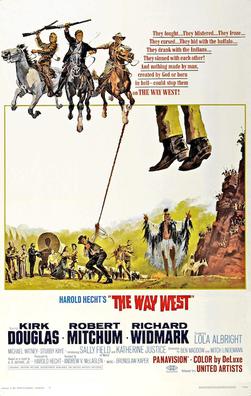
The Way West is a 1967 American Western film directed by Andrew V. McLaglen and starring Kirk Douglas, Robert Mitchum, and Richard Widmark. The supporting cast features Lola Albright, Jack Elam, Sally Field and Stubby Kaye. Ostensibly based on the Pulitzer Prize winning novel of the same name by A. B. Guthrie, Jr., the film is a drama about a band of settlers traveling by covered wagon train to Oregon in 1843. It includes on-location cinematography by William H. Clothier. Sam Elliott made his feature film debut as an uncredited Missouri townsman.
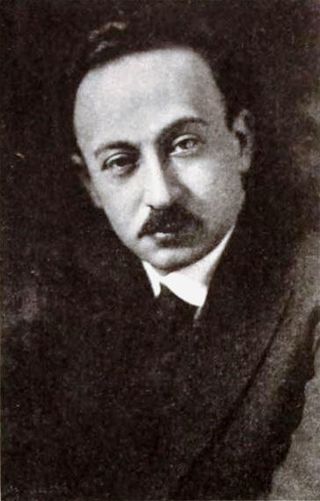
Hugo Riesenfeld was an Austrian-American composer. As a film director, he began to write his own orchestral compositions for silent films in 1917, and co-created modern production techniques where film scoring serves an integral part of the action. Riesenfeld composed about 100 film scores in his career.
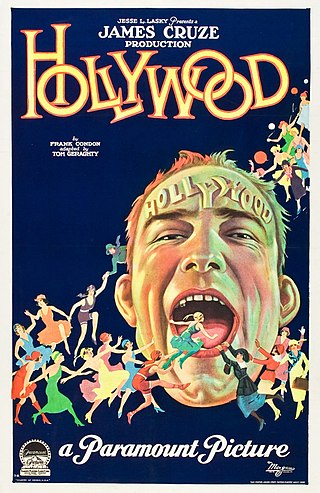
Hollywood is a 1923 American silent comedy film directed by James Cruze, co-written by Frank Condon and Thomas J. Geraghty, and released by Paramount Pictures. The film is a lengthier feature follow-up to Paramount's own short film exposé of itself, A Trip to Paramountown from 1922.
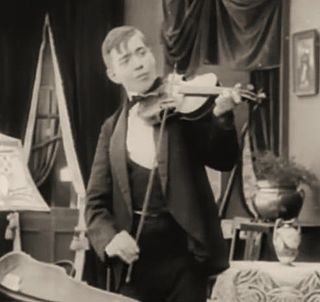
Karl Brown was an American cinematographer, screenwriter, and film director. He was also a member of the American Society of Cinematographers and served as vice president from 1924 to 1925.
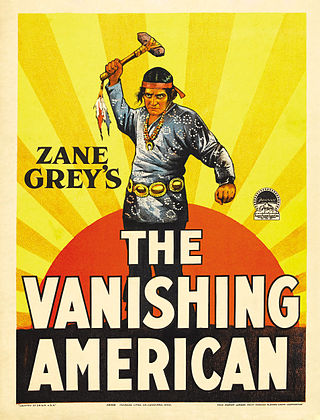
The Vanishing American is a 1925 American silent Western film produced by Famous Players–Lasky and distributed through Paramount Pictures. The film was directed by George B. Seitz and starred Richard Dix and Lois Wilson, recently paired in several screen dramas by Paramount. The film is based on the 1925 novel The Vanishing American by Zane Grey. It was remade as a 1955 film starring Scott Brady and Audrey Totter.

Sutter's Gold is a 1936 American Western film. It is a fictionalized version of the aftermath of the discovery of gold on Sutter's property, spurring the California Gold Rush of 1849. Edward Arnold plays John Sutter. The supporting cast includes Lee Tracy, Binnie Barnes, Katherine Alexander, Montagu Love, and Harry Carey as Kit Carson. The film was directed by James Cruze.

Bluebeard's 8th Wife is a 1923 American silent romantic comedy film produced by Famous Players–Lasky and distributed by Paramount Pictures. It was directed by Sam Wood and stars Gloria Swanson. The film is based on the French play La huitième femme de Barbe-Bleue by Alfred Savoir which is based on the Bluebeard tales of the 15th century. The play ran on Broadway in 1921 starring Ina Claire in the Swanson role.
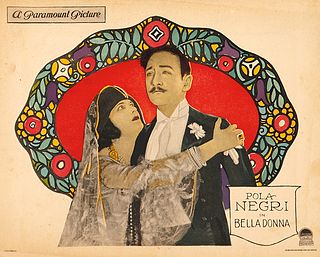
Bella Donna is a 1923 American silent film produced by Famous Players–Lasky and released by Paramount Pictures. The film is based on the 1909 novel, Bella Donna, by Robert Smythe Hichens which was later adapted for a 1912 Broadway play starring Alla Nazimova. This film is also a remake of the 1915 Paramount film Bella Donna starring Pauline Frederick. The 1923 film was directed by George Fitzmaurice and starred Pola Negri in her first American film.
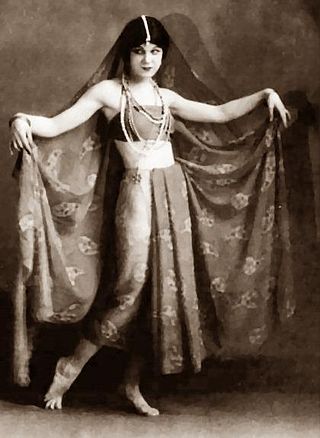
Lillian Ruth Powell was a Canadian-born American Denishawn-trained dancer who performed in early experimental silent film musicals. She would later teach dance and physical education before embarking on a nearly two-decade career in television.
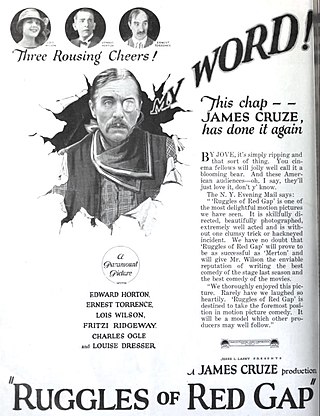
Ruggles of Red Gap is a 1923 American silent Western film directed by James Cruze and written by Anthony Coldeway and Walter Woods that was adapted from the novel by Harry Leon Wilson. The film stars Edward Everett Horton, Ernest Torrence, Lois Wilson, Fritzi Ridgeway, Charles Stanton Ogle, Louise Dresser, Anna Lehr, and William Austin. The film was released on October 7, 1923, by Paramount Pictures.

1883 is an American Western drama television miniseries created by Taylor Sheridan that premiered on December 19, 2021, on Paramount+. The series stars Tim McGraw, Faith Hill, Sam Elliott, Isabel May, LaMonica Garrett, Marc Rissmann, Audie Rick, Eric Nelsen, and James Landry Hébert. The story is chronologically the first of several prequels to Sheridan's Yellowstone and details how the Duttons came to own the land that became the Yellowstone Ranch.



















